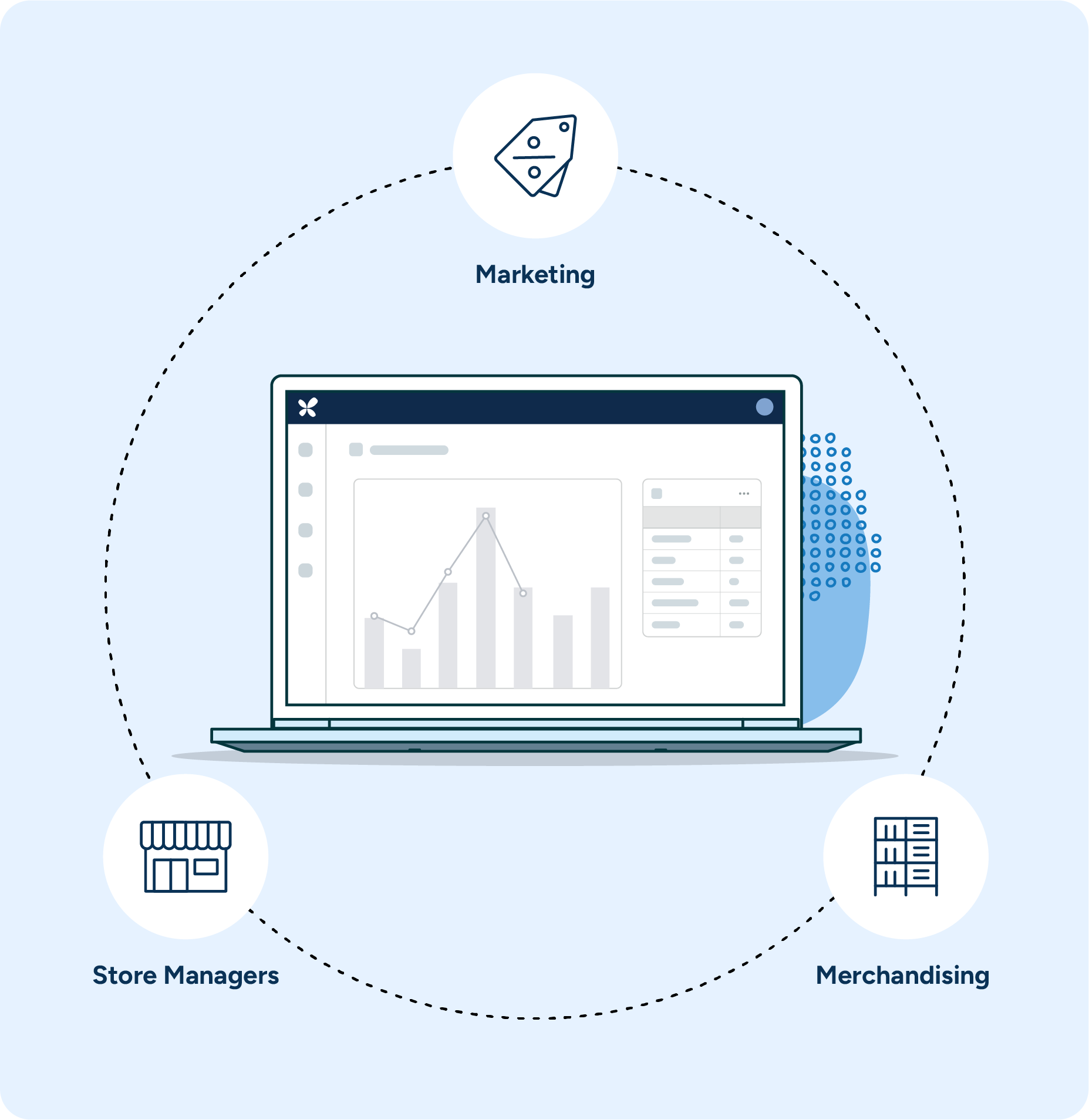Realized potential: Turn accurate forecasting data into optimized decision-making
Aug 7, 2024 • 5 min
Accurate forecasting data is paramount to a retailer’s success — at least if it’s being used meaningfully.
Think of the data like a battery. A fully charged battery contains great potential, but that potential goes unrealized if it remains in its package. Similarly, vast amounts of data don’t do a thing for retailers unless that data is used to power optimal decisions.
The urgency for greater forecast accuracy has driven much of retail’s AI exploration in recent years. However, this hyper-fixation on accruing accurate data too often causes organizations to lose sight of the bigger picture: using that data to further business goals.
Accurate forecasting is essential, but its true value lies in how retailers use forecasting data to drive strategic decision-making.
Data disconnection leads to strategic misalignment
Many retailers treat data-driven forecasting as a standalone function instead of a broader process — one focused on ensuring that consumers have access to the right products when needed. But the decision to isolate forecasting creates a disconnect between data collection and data application, creating gaps in essential areas like replenishment and leading to suboptimal choices.
The decision to isolate forecasting creates a disconnect between data collection and data application.
Consider a hypothetical retail chain that invests heavily in advanced forecasting tools. They collect vast amounts of data on customer purchasing behavior, inventory levels, and sales trends. But this data remains siloed within the analytics team and is not shared across departments.
This approach creates broader problems across the organization. The marketing team doesn’t have access to sales forecasts when planning promotions. The merchandising team doesn’t see real-time inventory data to adjust stock levels, and store managers lack insights into upcoming trends to optimize shelf space.
Both in theory and in real life, this disconnect results in several costly issues, including:
- Missed sales opportunities. Marketing campaigns fail to align with inventory availability, leading to stockouts during promotions and missed sales.
- Increased waste. The merchandising team overorders stock, resulting in excess inventory and increased waste.
- Customer dissatisfaction. Store managers can’t respond to trends quickly, leading to empty shelves for in-demand items and poor customer experience.
Challenges aside, retailers do benefit greatly from an AI-driven approach to replenishment through automated forecasting. AI and automation have improved availability and reduced waste levels to a level far beyond human capabilities, ensuring that the days of manual replenishment decisions remain in the past.
But to truly maximize the actionable value of their collected forecasting data, retailers must take three critical steps:
- Recalibrate focus. Retailers must shift towards decisions and ultimate business value, rather than just towards the tool and data – an issue of change management.
- Break down silos. Organizations should foster cross-departmental collaboration to ensure effective data usage across the organization.
- Choose a configurable solution. Companies must implement systems that allow for adjustments based on real-time business needs.

The unexplored value between forecasting and replenishment
Retailers often fret over picking the wrong forecast or optimizing forecast quality but fail to check if feeding data into the replenishment cycle moves the needle.
Imagine a retailer accurately forecasts high demand for a new product. A lack of proper promotion leaves customers unaware, leading to lower sales despite the forecasted demand. And if the product in question has low profit margins, even strong sales can’t significantly boost the business’s bottom line.
Ultimately, accurate forecasts alone aren’t enough. They must be paired with strategic promotions and profitable product selections to truly benefit the business.
This example illustrates the negative impact of data silos within organizations, where personnel and technological barriers separate forecast data from replenishment choices. A lack of integration with marketing and inventory management teams prevents data from driving effective decisions, leading to missed revenue opportunities and decreased customer satisfaction.
Bridging this gap requires retailers to integrate forecast data with broader business strategies, ensuring all relevant factors are included in decision-making. This integrated approach will help break down siloes and foster cross-departmental collaboration, turning accurate forecasts into actionable insights that effectively power business decisions.
READ MORE: Unlock profitability with replenishment optimization
Powering replenishment with accurate forecasting data and “glass box” solutions
Businesses need to see where their forecasts come from to fully understand and trust the data, make informed decisions, and adjust strategies in real-time based on actionable insights. Unfortunately, many retailers don’t have that sort of visibility into their forecasting. They use “black box” planning solutions — tools that lack transparency and prevent users from seeing how data is processed and predictions are made.
These self-proclaimed “hands-off” tools require retailers to rely on the strength of the forecast alone to generate ultimate value. Yet they obscure the data processing and decision-making mechanisms, leading to mistrust, less effective strategies, and missed opportunities.
There is a better alternative: the “glass box” approach. A glass box solution introduces transparency and encourages human involvement in forecasting, allowing retailers to understand forecast origins and utilize forecast data effectively. Integrating these AI forecasts with inventory management ensures that popular items are always in stock, leading to fewer stockouts and higher customer satisfaction.
A glass box solution introduces transparency and encourages human involvement in forecasting.
A key differentiator of glass box solutions is their ability to provide visibility into the ‘why’ behind forecasts. Retailers can see why forecasts are detecting trends or why a forecast is increasing, including factors such as:
- Seasonality
- Promotional events
- Price changes
- Weather
- Halo and cannibalization
This level of insight allows users to interact with the forecasting tool and make adjustments based on a clear understanding of the underlying data and trends.
Total physical control over a glass box planning solution is rare, but retailers can use the tool to determine the relationship between forecasting and replenishment. This visibility is invaluable for encouraging companies to rethink what the data means to their KPIs, how AI elevates their business, and what outcomes to strive for.
Make your data deliver with RELEX
Staying ahead of the competition requires retailers to broaden their focus from ensuring data accuracy to making informed decisions that enhance revenue, customer satisfaction, and operational flexibility. Embracing “glass box” solutions over “black box” ones is critical to this transformation.
RELEX has long emphasized the importance of transparent and actionable insights. Our glass box solution provides the clarity and control retailers need to optimize their replenishment cycles and achieve superior business outcomes.
Importantly, RELEX is a highly configurable glass box solution — one designed with a level of control that encourages interaction with forecasting and replenishment functions. Should a clear, real-time business opportunity present itself, RELEX comes with a gearstick that empowers users to speed and steer toward revenue-driving opportunities.



